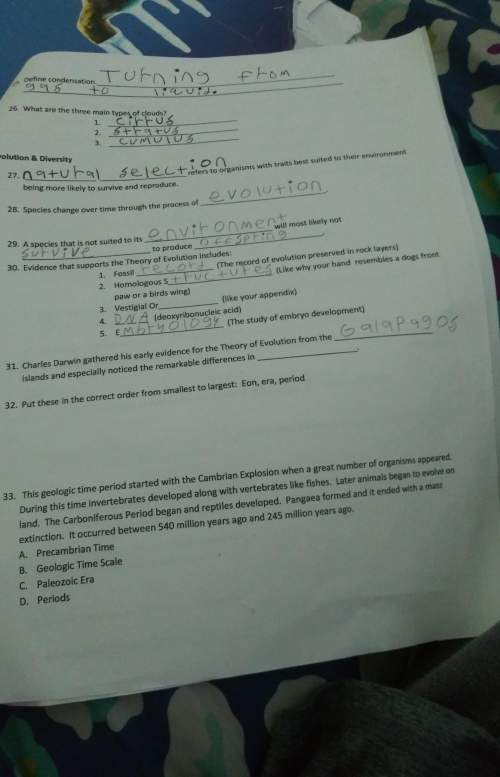
The table below shows the use of some energy production methods over time.
Type of energy Average energy used annually in the past (in million tons) Average energy used annually at present (in million tons) Average energy most likely to be used annually in the future (in million tons)
Oil 200 4000 300
Gas 100 2500 700
Coal 1000 2500 1400
Wind 0.1 50 2000
Hydropower 0.7 60 150
Tidal power 0.02 50 500
Based on the table, which of these statements best describes the potential impact of different methods of energy production on the environment in the future?
The height of tides may increase.
The speed of winds may decrease.
Greenhouse gases in the atmosphere may increase.
Population of wading birds in coastal locations may decrease.

Answers: 3


Other questions on the subject: Physics

Physics, 22.06.2019 11:30, animaljamissofab
Acaterpillar tries to climb straight up a wall a meter high, but for every 2 cm up it climbs, it slides down 1 cm. eventually, it reaches the top. when it reaches the top, it does not pull itself over so it will slide down 1 cm. what is the total displacement traveled?
Answers: 3

Physics, 22.06.2019 12:00, shrinu
Selma made a diagram to compare convection and radiation. which label belongs in the area marked x? must involve temperature differences between substances or objects only occurs when molecules are in direct contact involves the movement of fluids based on density differences can occur where there is little or no matter
Answers: 1

Physics, 22.06.2019 14:00, Amrinderkhattra
Give an example of a collision in real life. use the law of conservation of energy to describe the transfer of momentum. be sure and discuss the momentum before and after the collision occurs. you will need at least 3 sentences to thoroughly answer this question.
Answers: 1

Physics, 22.06.2019 19:30, u8p4
Water is siphoned from a large tank and discharges into the atmosphere through a 50-mm diameter tube. the end of the tube is b = 2.6 m below the tank bottom which is a = 6.7 m deep, and viscous effects are negligible. determine the maximum height h over which the water can be siphoned without cavitation occurring. atmospheric pressure is 101.4 kpa, and the water vapor pressure is 1.79 kpa (absolute). report your answer in meters to two decimal places.
Answers: 1
You know the right answer?
The table below shows the use of some energy production methods over time.
Type of energy Average...
Questions in other subjects:

English, 21.05.2020 19:05

Mathematics, 21.05.2020 19:05

Mathematics, 21.05.2020 19:05

History, 21.05.2020 19:05

Mathematics, 21.05.2020 19:05

Mathematics, 21.05.2020 19:05


History, 21.05.2020 19:05

Mathematics, 21.05.2020 19:06





